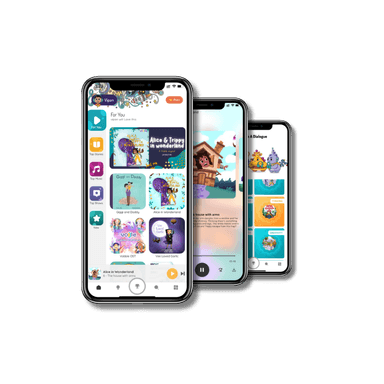The Top 5 Screen-Free Entertainment Options for Kids Born In The Digital Age

Raising kids is wonderfully rewarding, there's no denying that.
However, if there's one challenge unique to the modern parenting world, it's figuring out how to manage your kids' screen time.
From smartphones to tablets, digital devices have become a staple of life - it's tougher than ever today to exercise any control over how much time of a kid's life that screens take up.
As a starting point, why not explore some screen-free activities to build healthier habits in kids early on?
It's your best shot at helping your kid find just the right balance in their digital consumption and develop a healthier relationship with technology.
Here are some ideas -
1. Hands-On Activities:
Anything hands-on will easily pique a kid's interest. One tried-and-tested way to reduce screen time is by driving children to engage in these hands-on, creative activities.
Do they want to paint? Run mini-experiments? Fix something? Make things from scratch? There are so many options out there!
Kids will lap up these opportunities to have fun, make a mess, and be themselves. Give them that! Not only would screens go out of the picture, but kids would also learn how to build things on their own, find a way around problems, think critically and be independent.
2. Interactive Learning:
Who says kids can't find learning fun? The fun part of learning doesn't have to be confined to screens.
With so many advancements today, there's plenty of offline entertainment avenues for kids too. These range from puzzles to educational games, interactive books etc. When learning is made enjoyable and accessible, kids are way more likely to be passionate about it.
3. Multi-format Storytelling:
Image from Freepik
Is your child not into reading books? One of the most effective alternatives that’s also screen-free is the audio story format. With vivid narrations and immersive sound effects, audio stories are perfect for building imagination and encouraging active listening. It’s like you’re right there in the story surrounded by the actual characters.
Audio storytelling platforms like Vobble, for instance, provide them with a vast library of enriching audio content that can enhance their creativity and improve their language skills.
By integrating audio stories into daily routines, parents can offer a refreshing alternative to screen time without sacrificing fun or learning.
4. More Outdoor Hobbies:
There are a lot of activities that kids can engage in outdoors. The world out there beckons, asking to be explored. You could start with a simple nature walk and then build up to more fun activities like little treasure hunts, obstacle challenges, a game of catch, cycling, hiking and so much more.
With the outdoors, opportunities for learning are endless.
In conclusion,
Beginning from the time they're born, children are exposed to screens and their effects today - the buzz of a notification at any point of time in the day, the movies replaying on television screens, the dwindling levels of offline engagement as communication goes online.
Within this context, creating a sustainable screen regimen for kids may require parents to make some compromises, but what matters is that it's achievable.
The goal is not to eliminate screen time entirely but to strike a balance that nurtures the overall development of children.
For really young kids however, it’s essential to get them excited about offline activities that stimulate their creativity since these are their formative years when they’re soaking up everything. This can help them develop a better handle on technology as they grow up.
At the same time, it’s important that parents have access to resources that will help them guide their kids to safely navigate both the online and offline world. By setting age-appropriate limits, focusing on content quality, and allowing free & open communication, parents can help their kids learn how to use screens responsibly.


